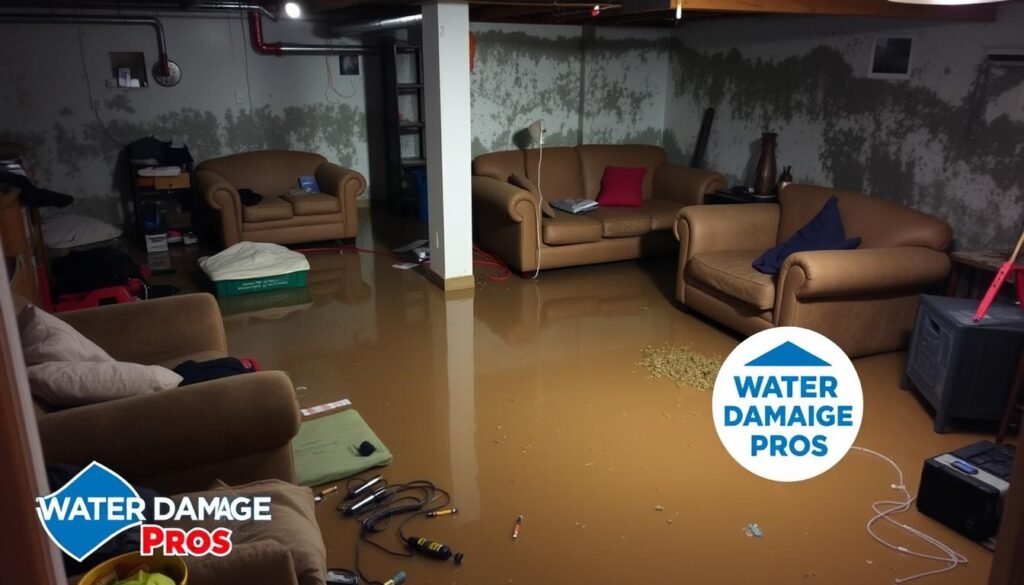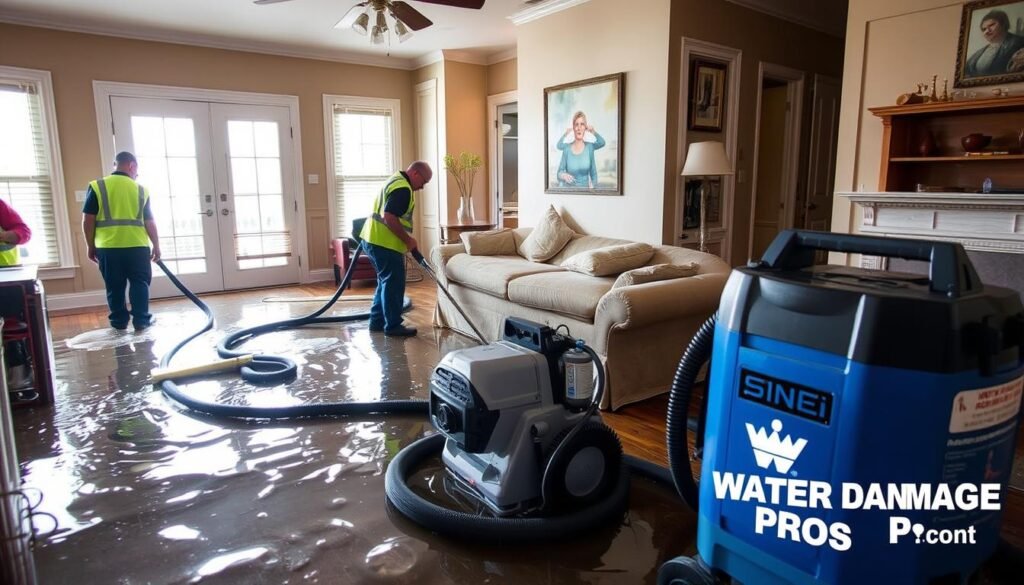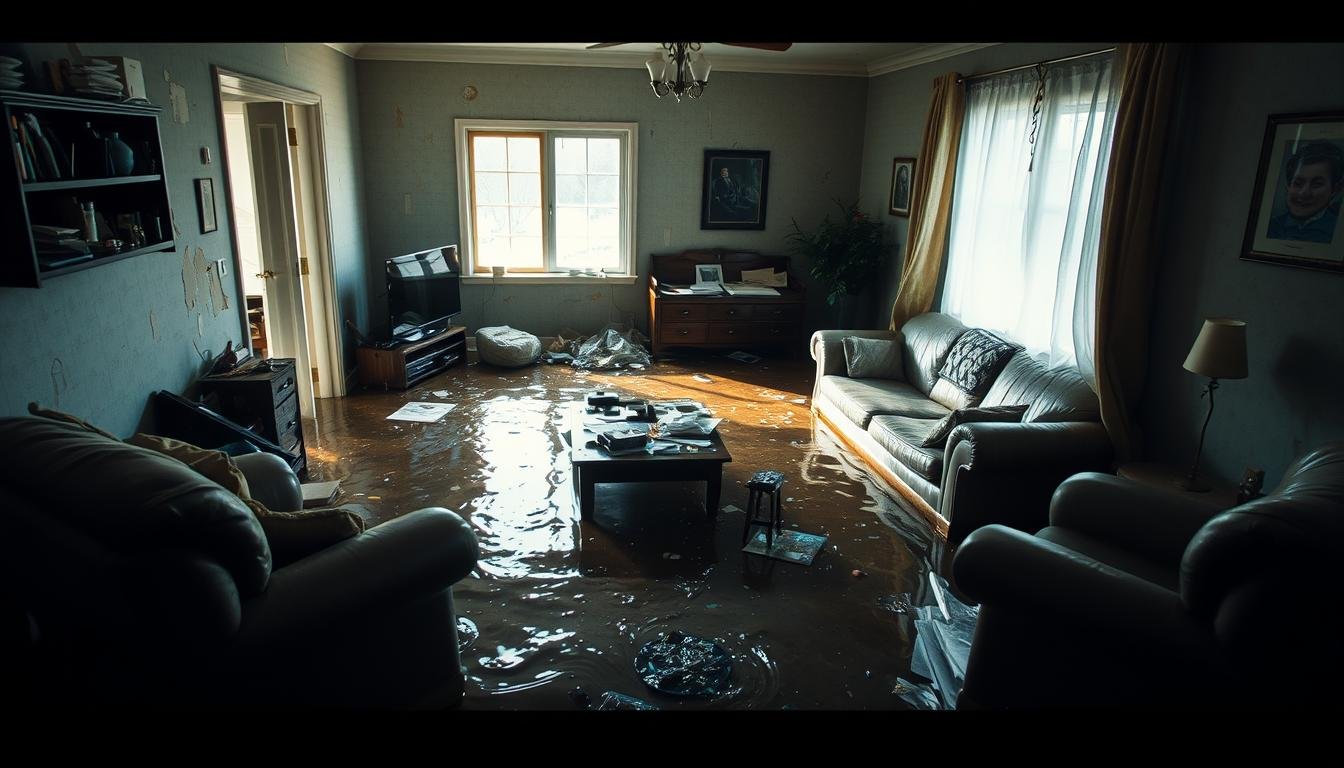Did you know that just six inches of water can make a driver lose control? This shows how dangerous flooding is. The EPA says flooding is the most common natural disaster in the U.S. When your home floods, acting fast is key for safety and recovery.
Flood damage in your home can feel overwhelming. First, make sure it’s safe to go back inside. Wait for the green light from authorities and watch out for dangers. Floodwater can be dirty and full of harmful stuff, so don’t walk through it.
When it’s safe, start cleaning up. Turn off gas, water, and electricity to stop more damage. Take photos and videos of the damage for insurance. This helps a lot with fixing the water damage and recovering from the disaster.
Call your insurance company right away. The National Flood Insurance Program often covers flood damage, even without a disaster declaration. Keep samples of damaged things like carpet or wallpaper. They can affect how much your insurance pays.
For better disaster recovery, think about getting professional help. Groups like Team Rubicon are experts in flood cleanup and can be a big help. Also, you might need permits from local offices before fixing your home.
Key Takeaways
- Ensure safety before re-entering your flooded home
- Turn off utilities to prevent further damage
- Document all damage for insurance claims
- Contact your insurance company immediately
- Avoid contact with contaminated floodwater
- Consider professional help for water damage restoration
- Check local regulations for repair permits
Assessing the Damage After Flooding
When your home floods, it’s important to assess the damage carefully. This step helps you understand how bad the damage is. It also prepares you for filing property damage claims. Let’s look at the main areas to check during your evaluation.
Identify Areas Affected by Water
Begin by checking all areas of your home that got wet. Look at both obvious and hidden spots like drawers and cabinet bases. If your basement flooded, pay special attention to it. Basements often hold a lot of water.

Look for Structural Issues
Next, check your home for any structural damage. Look for signs like warping, loose foundation elements, cracks, and holes. The roof is often damaged during storms, so check for missing shingles or sagging areas. Use moisture meters to find hidden water damage in walls and floors.
Document Everything for Insurance
It’s crucial to document everything for your insurance claim. Take photos and videos of all damage before you start cleaning or fixing things. This visual proof is key for your property damage claims. Save damaged materials like carpeting for your insurer to see.
- Contact your insurance provider right away
- Take detailed notes during your assessment
- Keep receipts for any immediate repairs
Remember, standard homeowners insurance usually doesn’t cover flood damage. If you live in a flood-prone area, get a separate flood insurance policy. For big damage, consider hiring professional water mitigation services. They can give you an expert assessment and help fix your property quickly.
Steps to Take for Safety and Recovery
After a flood, acting fast is key for safety and recovery. Hurricanes in Florida, Texas, and Louisiana have hit millions of homes. Here’s how to protect yourself and start cleaning up.
Turn Off Utilities
First, turn off all utilities. Shut down the main power and water supply. This step is crucial, even if it means waiting to clean. An electrician should check your electrical system before you turn it back on.
Wear Protective Gear
Protecting yourself is the top priority during water extraction. Wear rubber boots, gloves, and an N95 mask. Floodwater can be full of harmful contaminants. Your health is not worth the risk.
Remove Standing Water
Start removing water as soon as you can. Use pumps or wet vacuums to get rid of standing water. Open doors and windows for air if it’s safe. Quick action helps stop mold from growing, which can start in 24 to 48 hours.

| Task | Time Frame | Importance |
|---|---|---|
| Turn off utilities | Immediately | Critical for safety |
| Wear protective gear | Before entering flooded area | Prevents health risks |
| Remove standing water | Within 24-48 hours | Prevents mold growth |
Remember, you might need professional help for thorough mold removal and restoration. Don’t be afraid to reach out to experts for a safe and effective recovery.
When to Contact Professionals
Flood damage can quickly become a big problem. Water damage repair pros are key in fixing your home after a flood. They bring the expertise needed for major water damage.
Importance of Expert Help
Getting professional help within 24-48 hours is crucial to avoid dangers. Water Damage Pros – San Bernardino offers specialized services that can greatly help. They use advanced tools like air movers and dehumidifiers to cut down moisture and improve air flow in your home.
How Water Damage Pros Can Assist
Water Damage Pros can do thorough cleaning, disinfection, and mold removal. They’re ready to tackle mold problems bigger than 6 square feet. This is important because mold can grow in just 24-48 hours after a flood. They also help with flood insurance claims, making sure you get the right documentation.
Remember, flood insurance is often through the FEMA National Flood Insurance Program. It’s key to have this coverage since fixing flood damage can be very costly. If you’re dealing with water damage, don’t wait to contact Water Damage Pros – San Bernardino for a free estimate and expert help.


